How DALL·E is Transforming Digital Art and Design
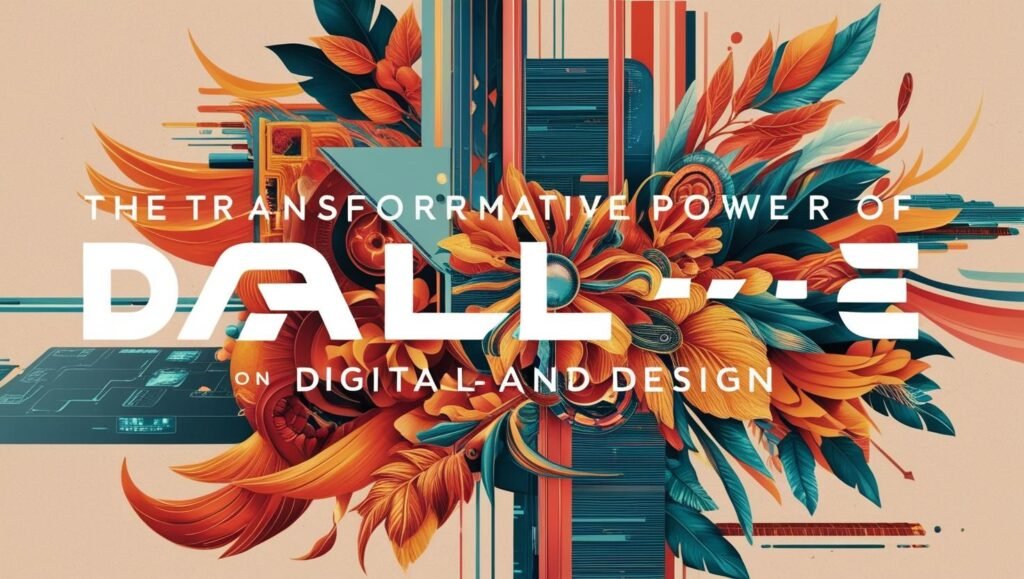
In a world where imagination knows no bounds, DALL·E is emerging as a revolutionary force, reshaping the landscape of digital art and design. This groundbreaking technology, driven by artificial intelligence, empowers artists and creators to transform mere concepts into stunning visual masterpieces with just a few words.
As we delve into the creative possibilities that DALL·E offers, we’ll explore how it captivates the artistic community and sparks innovation beyond traditional boundaries. From abstract illustrations to hyper-realistic visuals, DALL·E is not just a tool—it’s a catalyst for untamed creativity.
Join us as we unravel how this extraordinary AI is unveiling new horizons in digital artistry, making the once-impossible, beautifully attainable. Discover how DALL·E is not only changing the way we create but also inspiring a new generation of artists to dream without limits.
The Evolution of Digital Art from traditional to AI
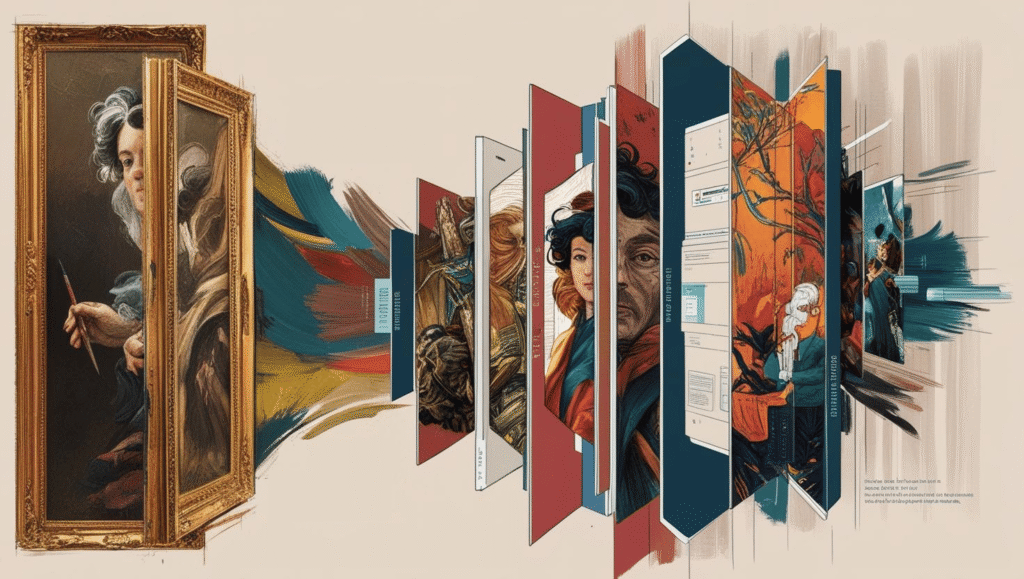
The realm of digital art has witnessed a remarkable evolution over the past few decades. Initially, digital art was seen as an extension of traditional art forms, where artists used digital tools to enhance their creations. Early digital art relied heavily on software like Adobe Photoshop and Illustrator, which allowed for the manipulation of images and the creation of digital illustrations.
These tools were groundbreaking at the time, providing artists with new ways to experiment with color, texture, and form. The transition from traditional mediums to digital platforms marked a significant shift in the art world, opening up endless possibilities for creativity and innovation.
As technology advanced, so did the capabilities of digital art. The introduction of graphic tablets and styluses revolutionized the way artists interacted with their digital canvases. These tools provided a more natural and intuitive drawing experience, closely mimicking the feel of traditional art mediums like pencils and brushes.
The rise of 3D modeling software further expanded the horizons of digital art, enabling artists to create intricate and lifelike sculptures and environments. This era saw the emergence of digital artists who specialized in various niches, from concept art for video games and movies to digital painting and animation.
The advent of artificial intelligence (AI) has ushered in a new era for digital art, pushing the boundaries of creativity even further. AI-driven tools like DALL·E have transformed the way artists approach their work, offering unprecedented levels of assistance and inspiration.
Unlike traditional digital tools, which require manual input and effort, AI-powered systems can generate complex and visually stunning artworks based on simple textual descriptions. This shift has not only democratized art creation, making it accessible to a broader audience, but also sparked a new wave of artistic exploration and experimentation.
How DALL·E Works: A Deep Dive into the Technology
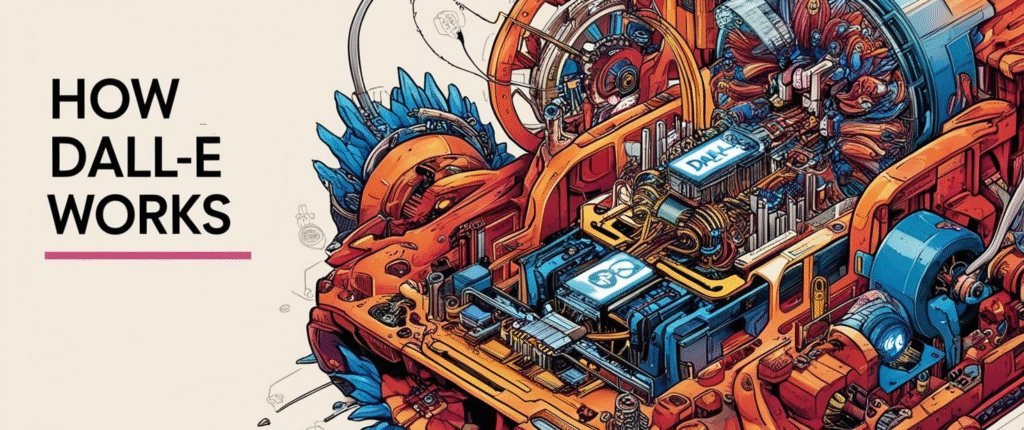
DALL·E, developed by OpenAI, is an AI-based image generation model that has taken the art and design world by storm. At its core, DALL·E leverages a neural network architecture known as a Transformer, which is adept at understanding and generating human-like text.
The model is trained on a diverse dataset comprising millions of images and their corresponding textual descriptions. By learning the associations between visual elements and linguistic cues, DALL·E can create detailed and coherent images from textual prompts provided by users.
The process begins with the user inputting a textual description, which serves as the basis for the image generation. DALL·E then interprets this description, breaking it down into key components and visual elements. Using its vast knowledge base, the model synthesizes these elements to produce an image that aligns with the given prompt.
The resulting artwork can range from simple illustrations to complex, multi-layered compositions, showcasing the model’s versatility and creative potential. This ability to translate words into visuals with such accuracy and creativity is what sets DALL·E apart from traditional digital art tools.
One of the most impressive features of DALL·E is its ability to generate images that are not only visually appealing but also contextually relevant. The model can handle abstract concepts, intricate details, and even stylistic nuances, making it a valuable tool for artists and designers.
Additionally, DALL·E can produce multiple variations of an image based on the same prompt, allowing users to explore different interpretations and refine their ideas. This iterative process fosters a collaborative relationship between the artist and the AI, where the technology acts as both an assistant and a source of inspiration.
The Impact of DALL·E on Artists and Designers
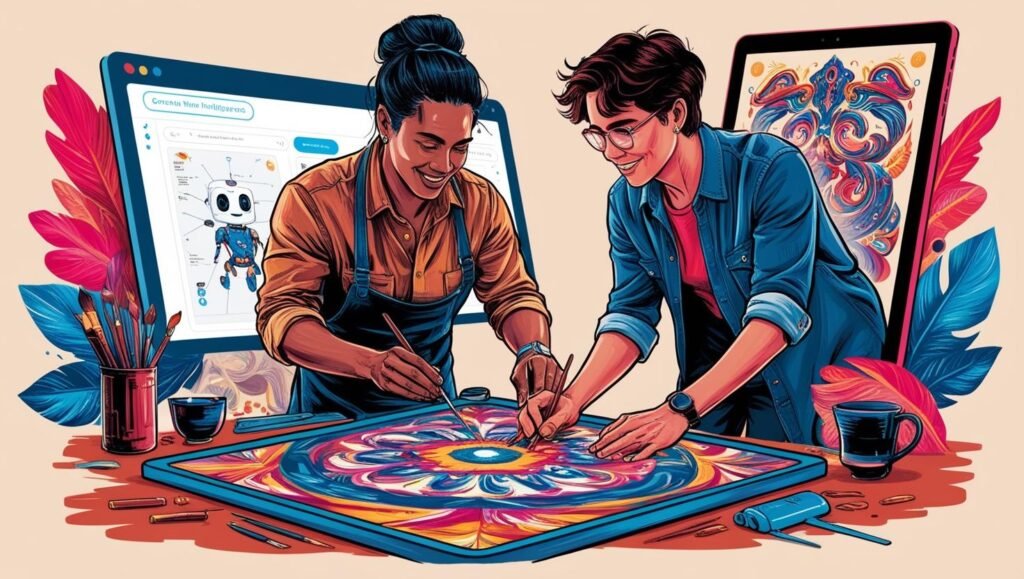
The introduction of DALL·E has had a profound impact on the creative community, reshaping the way artists and designers approach their work. One of the most significant benefits of DALL·E is its ability to streamline the creative process, allowing artists to quickly visualize their ideas without the need for extensive manual effort.
This efficiency is particularly valuable in industries where time and resources are limited, such as advertising, graphic design, and entertainment. By automating the initial stages of image creation, DALL·E enables artists to focus on refining and enhancing their work, leading to higher quality outcomes.
Moreover, DALL·E has democratized access to high-quality art and design, making it possible for individuals with limited artistic skills to create stunning visuals. This accessibility has opened up new opportunities for amateur artists, hobbyists, and small businesses, who can now leverage AI-generated art for various purposes, from social media content to marketing materials.
The ability to generate professional-grade images with minimal effort has also empowered non-artists to express their creativity and bring their ideas to life, fostering a more inclusive and diverse creative landscape.
For professional artists and designers, DALL·E serves as a powerful tool for experimentation and innovation. The model’s ability to generate unique and unexpected visuals can inspire new directions and concepts that might not have been considered otherwise.
This collaborative dynamic between human creativity and AI-driven generation encourages artists to push the boundaries of their craft, exploring new styles, techniques, and themes. As a result, DALL·E is not only changing the way art is created but also influencing the evolution of artistic expression itself.
Creative Applications of DALL·E in Various Industries
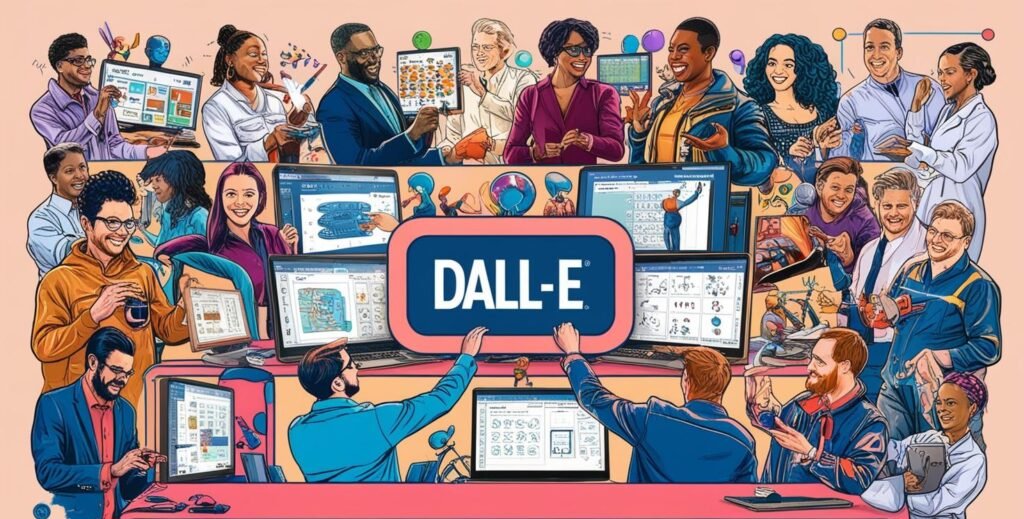
The versatility of DALL·E extends beyond the realm of traditional art, finding applications in a wide range of industries. In the advertising and marketing sector, DALL·E is revolutionizing the way campaigns are conceived and executed. Brands can use AI-generated visuals to create eye-catching advertisements, social media posts, and promotional materials that resonate with their target audience.
The ability to generate multiple variations of an image allows marketers to A/B test different concepts and optimize their content for maximum engagement. This adaptability makes DALL·E an invaluable asset for creative agencies and marketing teams looking to stay ahead of the curve.
In the entertainment industry, DALL·E is being utilized to enhance the visual storytelling process. Filmmakers, game developers, and animators can leverage the model to generate concept art, character designs, and scene layouts, streamlining the pre-production phase.
The AI’s ability to produce high-quality visuals based on textual descriptions allows creatives to quickly iterate on ideas and bring their visions to life. This efficiency can lead to more innovative and visually stunning productions, as creators have more time and resources to focus on refining their narratives and aesthetics.
The fashion and interior design industries are also exploring the potential of DALL·E to transform their creative workflows. Fashion designers can use the AI to generate unique patterns, textiles, and clothing designs, pushing the boundaries of traditional fashion aesthetics.
Similarly, interior designers can create customized décor and furniture concepts that cater to the specific tastes and preferences of their clients. By integrating DALL·E into their design processes, these industries can offer more personalized and cutting-edge solutions, enhancing the overall customer experience.
DALL·E vs. Traditional Art: A Comparative Analysis
The advent of DALL·E has sparked a lively debate about the merits of AI-generated art compared to traditional art forms. On one hand, DALL·E offers unparalleled efficiency and versatility, enabling artists to create complex and detailed images in a fraction of the time it would take using traditional methods.
The ability to generate multiple iterations and variations of an image allows for greater experimentation and refinement, leading to innovative and high-quality outcomes. This efficiency is particularly beneficial in commercial settings, where time and resources are often limited.
However, there are aspects of traditional art that DALL·E cannot replicate. The tactile experience of working with physical materials, the emotional connection between the artist and their medium, and the unique imperfections and textures that characterize handmade art are all elements that AI-generated art lacks.
Traditional art is deeply rooted in human expression and craftsmanship, and these qualities are integral to its value and appeal. While DALL·E can mimic certain styles and techniques, it cannot fully capture the depth and nuance of human creativity.
Ultimately, the comparison between DALL·E and traditional art is not a matter of superiority but rather one of complementarity. Each has its own strengths and limitations, and both can coexist and enrich the art world in different ways. DALL·E serves as a powerful tool for innovation and exploration, pushing the boundaries of what is possible in digital art. Meanwhile, traditional art continues to celebrate the human touch and the timeless beauty of handcrafted creations.
By embracing both, artists and audiences can enjoy a diverse and dynamic artistic landscape.
User Experiences: Success Stories with DALL·E
Artists and designers from various fields have shared their success stories with DALL·E, highlighting the transformative impact of this AI technology on their creative processes. For instance, a freelance graphic designer used DALL·E to create a series of unique and visually striking illustrations for a children’s book project.
The AI-generated images provided a fresh perspective and helped the designer overcome creative blocks, resulting in a final product that was both imaginative and captivating. This experience demonstrated how DALL·E can serve as a valuable collaborator, offering new ideas and inspiration when needed.
In another example, a marketing agency leveraged DALL·E to develop a campaign for a new product launch. The team used the AI to generate a variety of visual concepts based on the brand’s messaging and target audience.
This approach allowed them to quickly identify the most effective designs and refine their strategy accordingly. The campaign’s success underscored the potential of DALL·E to enhance creativity and efficiency in commercial contexts, helping businesses achieve their marketing goals with greater ease and impact.
An independent artist explored the use of DALL·E to create a series of abstract digital paintings. By experimenting with different textual prompts and iterations, the artist was able to produce a diverse body of work that pushed the boundaries of their usual style.
This process not only expanded the artist’s creative repertoire but also introduced them to new techniques and possibilities. The experience highlighted the role of DALL·E as a catalyst for artistic growth and exploration, encouraging artists to step outside their comfort zones and embrace new challenges.
Future of AI Art and Design
As AI continues to evolve, the future of art and design is poised for exciting developments. One of the key trends is the integration of AI tools like DALL·E into mainstream creative workflows. As more artists and designers become familiar with AI technology, we can expect to see a greater fusion of human and machine creativity, resulting in innovative and boundary-pushing artworks.
This collaboration will likely lead to new artistic movements and styles, as AI-generated art becomes an accepted and celebrated part of the creative landscape.
Another trend to watch is the increasing accessibility of AI-driven art tools. As technology advances and becomes more affordable, a wider range of individuals and organizations will have the opportunity to experiment with AI-generated art.
This democratization of creativity will foster a more inclusive and diverse art world, where people from different backgrounds and skill levels can contribute to the evolution of digital art. The proliferation of AI tools will also inspire new educational initiatives, as institutions and online platforms incorporate AI art into their curricula and training programs.
Looking ahead, we can also anticipate advancements in the sophistication and capabilities of AI art models. Future iterations of DALL·E and similar technologies may offer even greater control and customization, allowing artists to fine-tune their creations with precision.
Additionally, the integration of AI with other emerging technologies, such as augmented reality (AR) and virtual reality (VR), will open up new dimensions for immersive and interactive art experiences. These innovations will continue to push the boundaries of what is possible in art and design, shaping the future of creativity in ways we can only begin to imagine.
Conclusion:
DALL·E represents a monumental leap forward in the world of digital art and design, offering artists and creators a powerful tool to unleash their imaginations. By transforming textual prompts into visually stunning images, DALL·E has redefined the creative process, making it more accessible, efficient, and innovative.
The impact of this AI technology extends across various industries, from advertising and entertainment to fashion and interior design, demonstrating its versatility and potential to revolutionize creative workflows.
As we embrace the future of creativity with DALL·E, it is essential to consider the ethical implications and strive for responsible use of AI-generated art. By addressing issues of authorship, ownership, and potential misuse, we can ensure that AI serves as a positive force in the art world.
Moreover, fostering a collaborative relationship between human creativity and AI will enable artists to push the boundaries of their craft, exploring new styles, techniques, and themes.
In conclusion, DALL·E is not just a tool—it’s a catalyst for untamed creativity, inspiring artists to dream without limits and explore new horizons in digital artistry.
As we continue to navigate the evolving landscape of AI art and design, the possibilities are boundless. By embracing both traditional and AI-driven art forms, we can create a diverse and dynamic artistic future that celebrates the best of human and machine creativity.
For the latest insights and updates, be sure to explore our AI Trends & News and stay ahead in the world of artificial intelligence.

Pingback: Copilot Image Generators Explained And Why Digital Artists Are Paying Attention – AI insights world
Pingback: Imagen 4 Review: Google’s Most Advanced Model Yet ? - AI insights world
Pingback: Midjourney v7 Review - AI insights world
Pingback: GPT‑Image‑1 Review: Text-to-Image - AI insights world